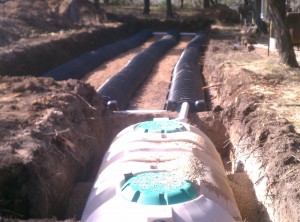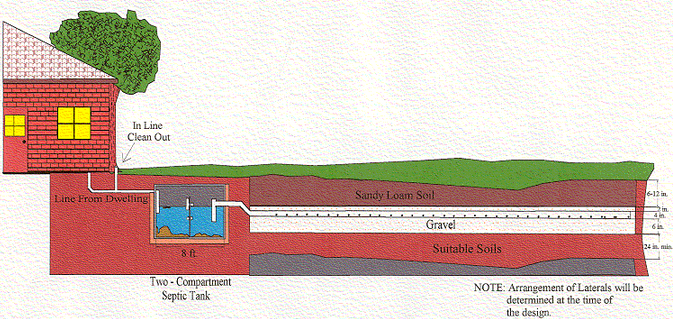For service call (210) 890-2778
or click here to request service
How Septic Systems Work

How a septic system works is pretty simple, although there are some critical elements to the construction and there is actually some biology involved. The main thing you need to know is that a septic system consists of two main parts: a septic tank and a soil absorption area. Here’s a simple breakdown of what happens as the wastewater moves through the system.
From home to tank
Liquids and waste flow through the sewer line from the house to the septic tank. The paper and waste remain in the tank and the same volume of liquids that enter the tank exit through the outlet pipe to the absorption area.
The purpose of the septic tank is to separate the solids from the liquids and reduce the strength of the sewage before it enters the soil.
Solids accumulate over time and need to be removed so they do not filter to the soil absorption area and clog up the soil absorption area.
From tank to drainfield
After traveling through the tank, liquids flow into the soil absorption area, which is made of perforated pipe encased with gravel, leaching chambers, or gravelless pipe. This serves as a temporary holding place while the liquids percolate into the soil beneath the trenches, where most of the treatment occurs.
The soil absorption area is the most important part of a septic system. This is where the disposal and microbial treatment takes place.
The soil texture determines how well the effluent moves through it: if the soil has more clay in it, the wastewater moves more slowly and will not be treated when the soils are saturated; if the soil is more rocky, the wastewater may not percolate, or it may move through the rock too quickly without being treated before it reaches a groundwater source.
Watch an animation of how a septic system works.
Maintenance matters
Septic systems shouldn’t need constant attention, but going too long without routine pumping or maintenance can mean backups or other problems, such as having to replace the whole system.
For more information on septic system do’s and don’ts, please look around the website or visit our FAQ page.
If you would like to schedule a pumping or inspection, please contact us online or give us a call today.

